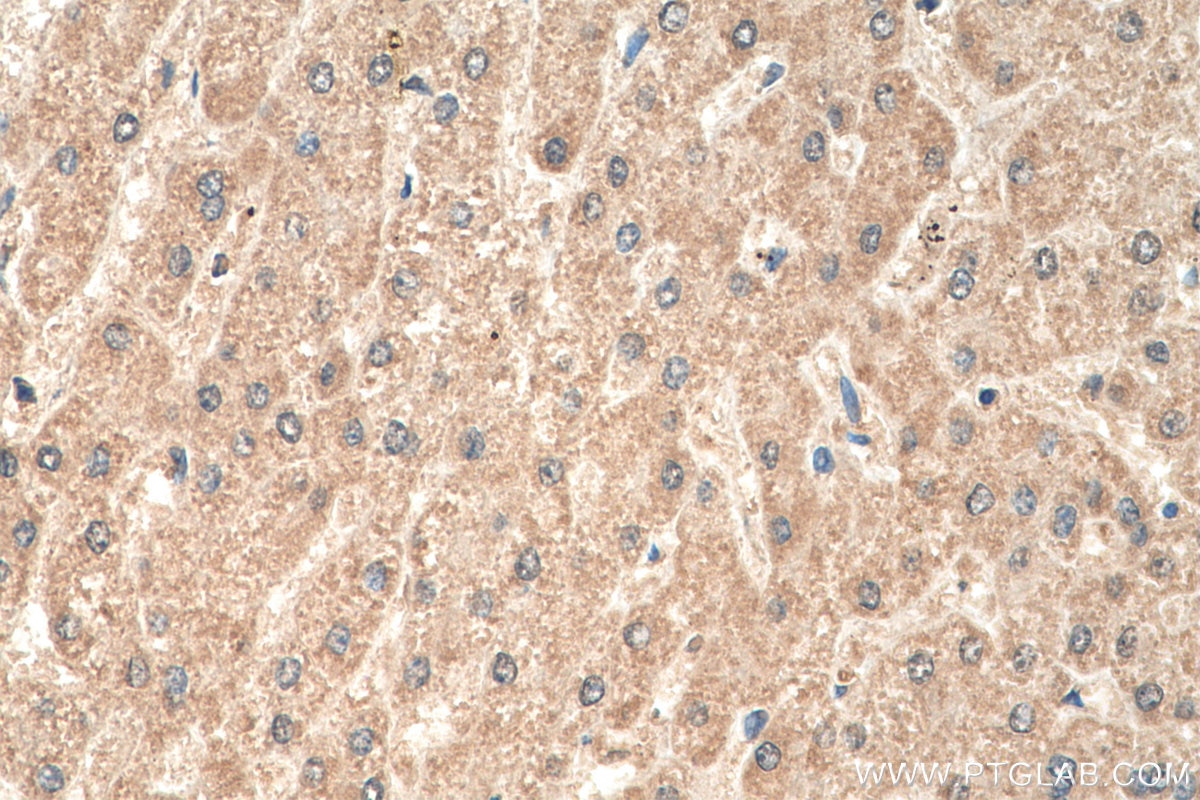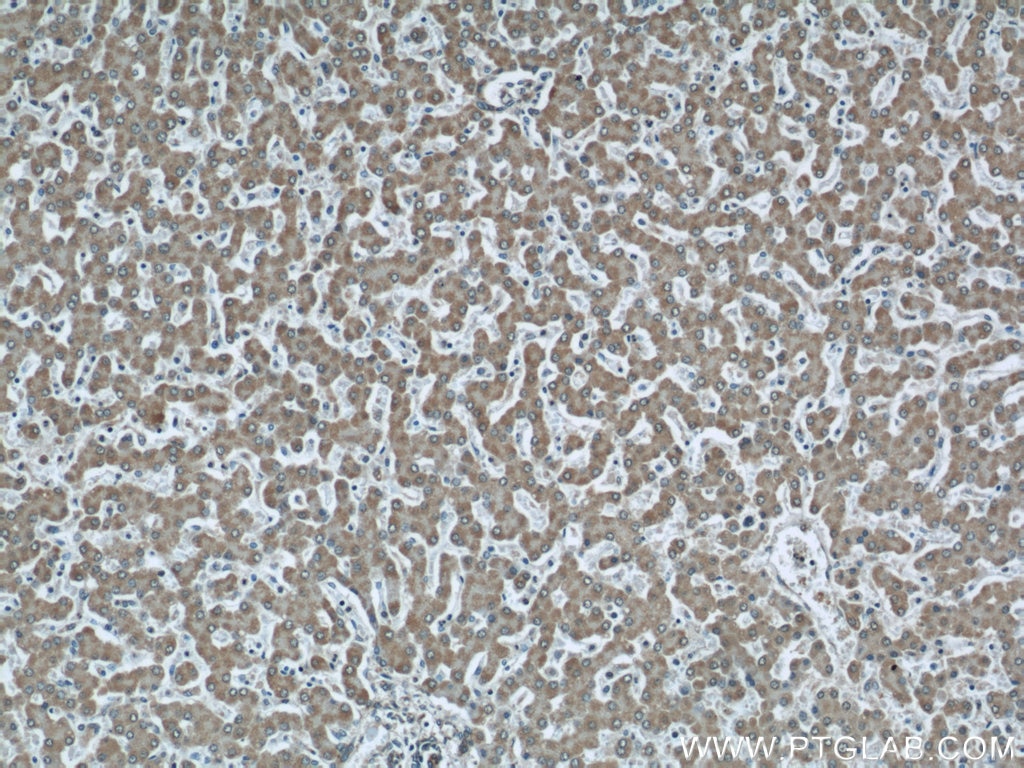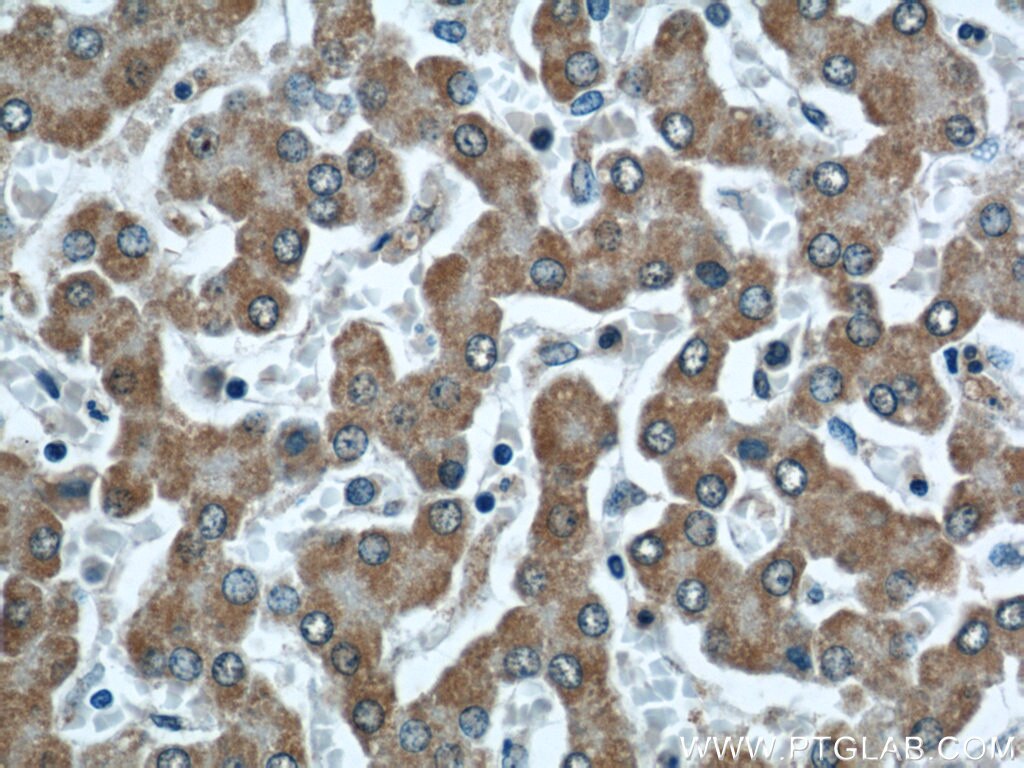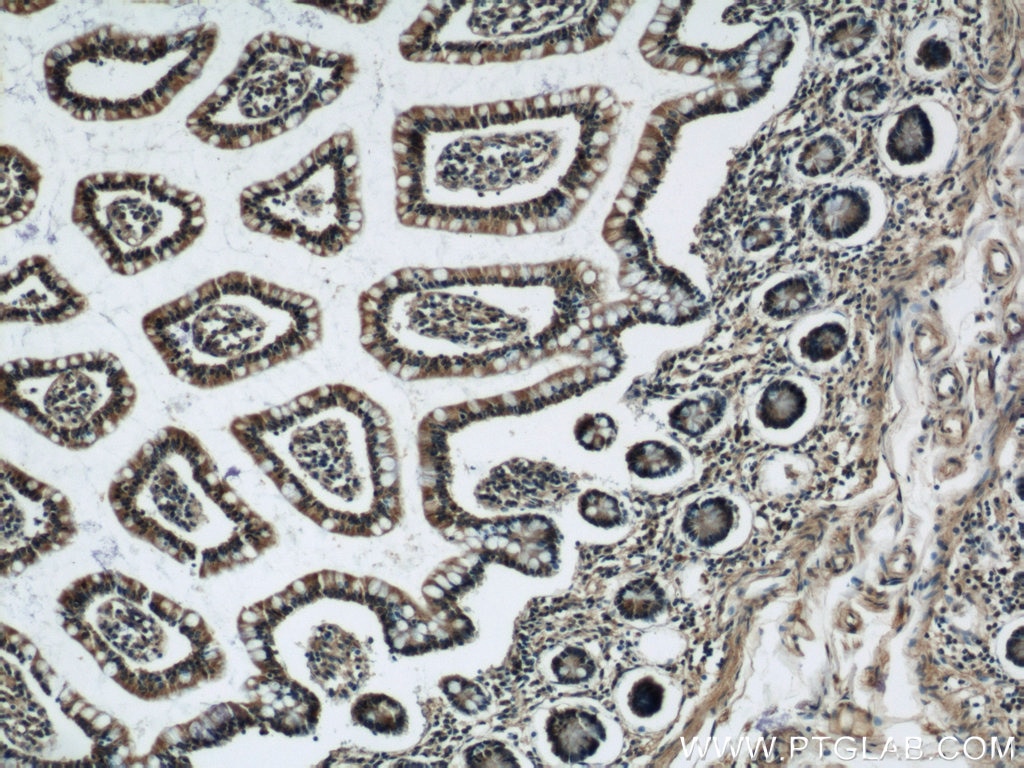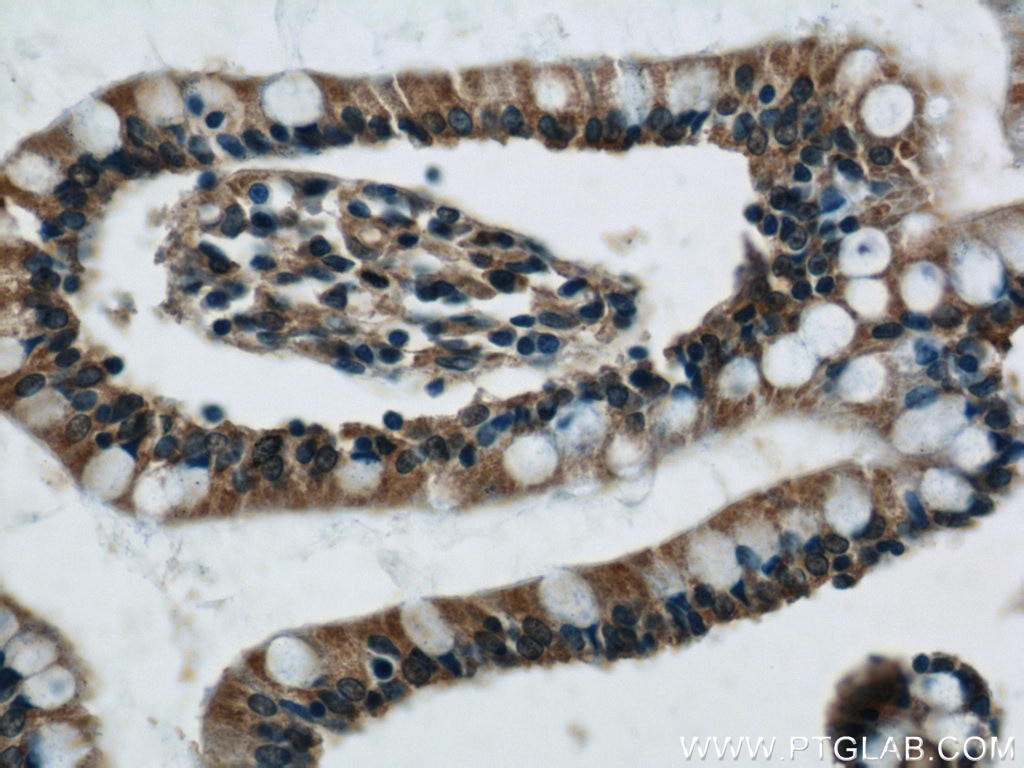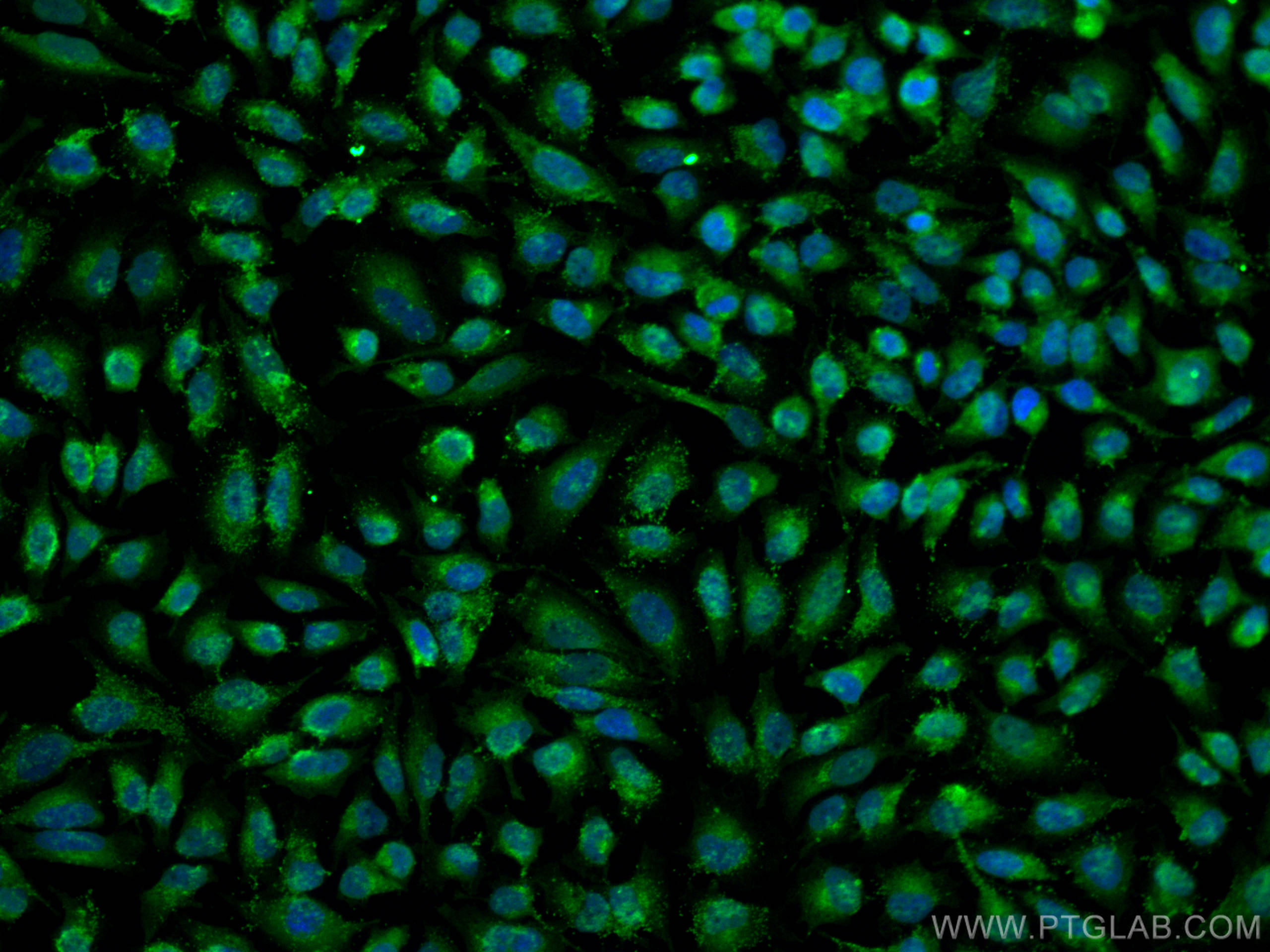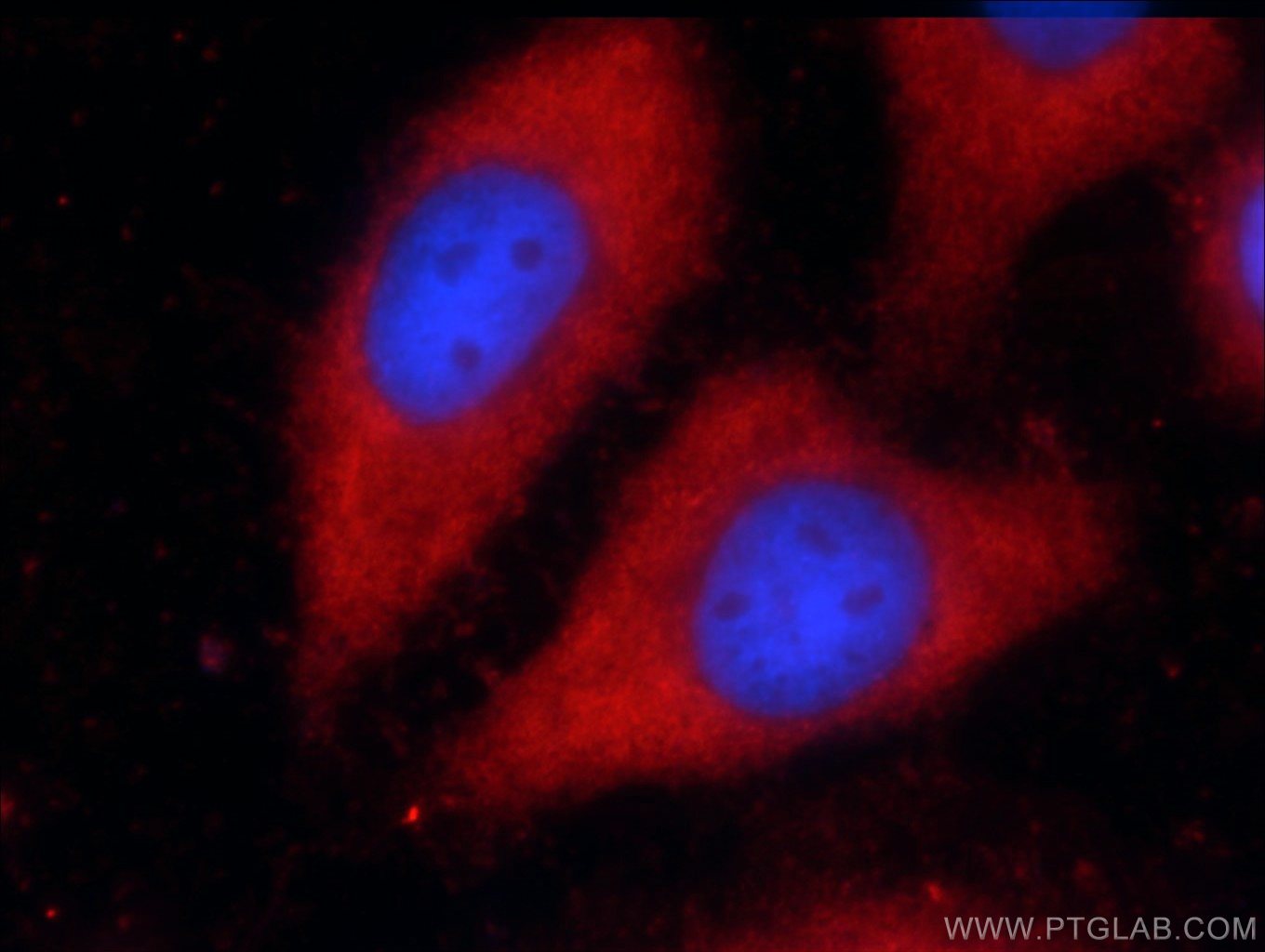- Phare
- Validé par KD/KO
Anticorps Polyclonal de lapin anti-VAMP7/TI-VAMP
VAMP7/TI-VAMP Polyclonal Antibody for WB, IP, IF, IHC, ELISA
Hôte / Isotype
Lapin / IgG
Réactivité testée
Humain, rat, souris
Applications
WB, IHC, IF/ICC, IP, ELISA, Blocking
Conjugaison
Non conjugué
N° de cat : 22268-1-AP
Synonymes
Galerie de données de validation
Applications testées
| Résultats positifs en WB | tissu cérébral de souris, tissu cérébral de rat |
| Résultats positifs en IP | tissu cérébral de souris |
| Résultats positifs en IHC | tissu hépatique humain, tissu d'intestin grêle humain il est suggéré de démasquer l'antigène avec un tampon de TE buffer pH 9.0; (*) À défaut, 'le démasquage de l'antigène peut être 'effectué avec un tampon citrate pH 6,0. |
| Résultats positifs en IF/ICC | cellules HeLa, cellules HepG2 |
Dilution recommandée
| Application | Dilution |
|---|---|
| Western Blot (WB) | WB : 1:1000-1:8000 |
| Immunoprécipitation (IP) | IP : 0.5-4.0 ug for 1.0-3.0 mg of total protein lysate |
| Immunohistochimie (IHC) | IHC : 1:50-1:500 |
| Immunofluorescence (IF)/ICC | IF/ICC : 1:50-1:500 |
| It is recommended that this reagent should be titrated in each testing system to obtain optimal results. | |
| Sample-dependent, check data in validation data gallery | |
Applications publiées
| KD/KO | See 3 publications below |
| WB | See 4 publications below |
| IF | See 1 publications below |
Informations sur le produit
22268-1-AP cible VAMP7/TI-VAMP dans les applications de WB, IHC, IF/ICC, IP, ELISA, Blocking et montre une réactivité avec des échantillons Humain, rat, souris
| Réactivité | Humain, rat, souris |
| Réactivité citée | rat, Humain, souris |
| Hôte / Isotype | Lapin / IgG |
| Clonalité | Polyclonal |
| Type | Anticorps |
| Immunogène | Peptide |
| Nom complet | vesicle-associated membrane protein 7 |
| Masse moléculaire calculée | 25 kDa |
| Poids moléculaire observé | 20-25 kDa |
| Numéro d’acquisition GenBank | NM_005638 |
| Symbole du gène | VAMP7 |
| Identification du gène (NCBI) | 6845 |
| Conjugaison | Non conjugué |
| Forme | Liquide |
| Méthode de purification | Purification par affinité contre l'antigène |
| Tampon de stockage | PBS avec azoture de sodium à 0,02 % et glycérol à 50 % pH 7,3 |
| Conditions de stockage | Stocker à -20°C. Stable pendant un an après l'expédition. L'aliquotage n'est pas nécessaire pour le stockage à -20oC Les 20ul contiennent 0,1% de BSA. |
Informations générales
VAMP7, also named as SYBL1 and TI-VAMP, belongs to the synaptobrevin family. It is involved in the targeting and/or fusion of transport vesicles to their target membrane during transport of proteins from the early endosome to the lysosome. VAMP7 is required for heterotypic fusion of late endosomes with lysosomes and homotypic lysosomal fusion. It is required for calcium regulated lysosomal exocytosis. VAMP7 is involved in the export of chylomicrons from the endoplasmic reticulum to the cis Golgi. It is required for exocytosis of mediators during eosinophil and neutrophil degranulation, and target cell killing by natural killer cells. It is also required for focal exocytosis of late endocytic vesicles during phagosome formation. The antibody is specific to VAMP7.
Protocole
| Product Specific Protocols | |
|---|---|
| WB protocol for VAMP7/TI-VAMP antibody 22268-1-AP | Download protocol |
| IHC protocol for VAMP7/TI-VAMP antibody 22268-1-AP | Download protocol |
| IF protocol for VAMP7/TI-VAMP antibody 22268-1-AP | Download protocol |
| IP protocol for VAMP7/TI-VAMP antibody 22268-1-AP | Download protocol |
| Standard Protocols | |
|---|---|
| Click here to view our Standard Protocols |
Publications
| Species | Application | Title |
|---|---|---|
Adv Sci (Weinh) Engineered Cell-Derived Microparticles Bi2Se3/DOX@MPs for Imaging Guided Synergistic Photothermal/Low-Dose Chemotherapy of Cancer. | ||
Autophagy Bunyavirus SFTSV exploits autophagic flux for viral assembly and egress
| ||
Cancer Res Commun Combination of a New Oral Demethylating Agent, OR2100, and Venetoclax for Treatment of Acute Myeloid Leukemia
| ||
Biochem Biophys Res Commun VAMP7 knockdown in secretory granules impairs CCL2 secretion in mast cells
| ||
Small Key Role of Microtubule and Its Acetylation in a Zinc Oxide Nanoparticle-Mediated Lysosome-Autophagy System. |



